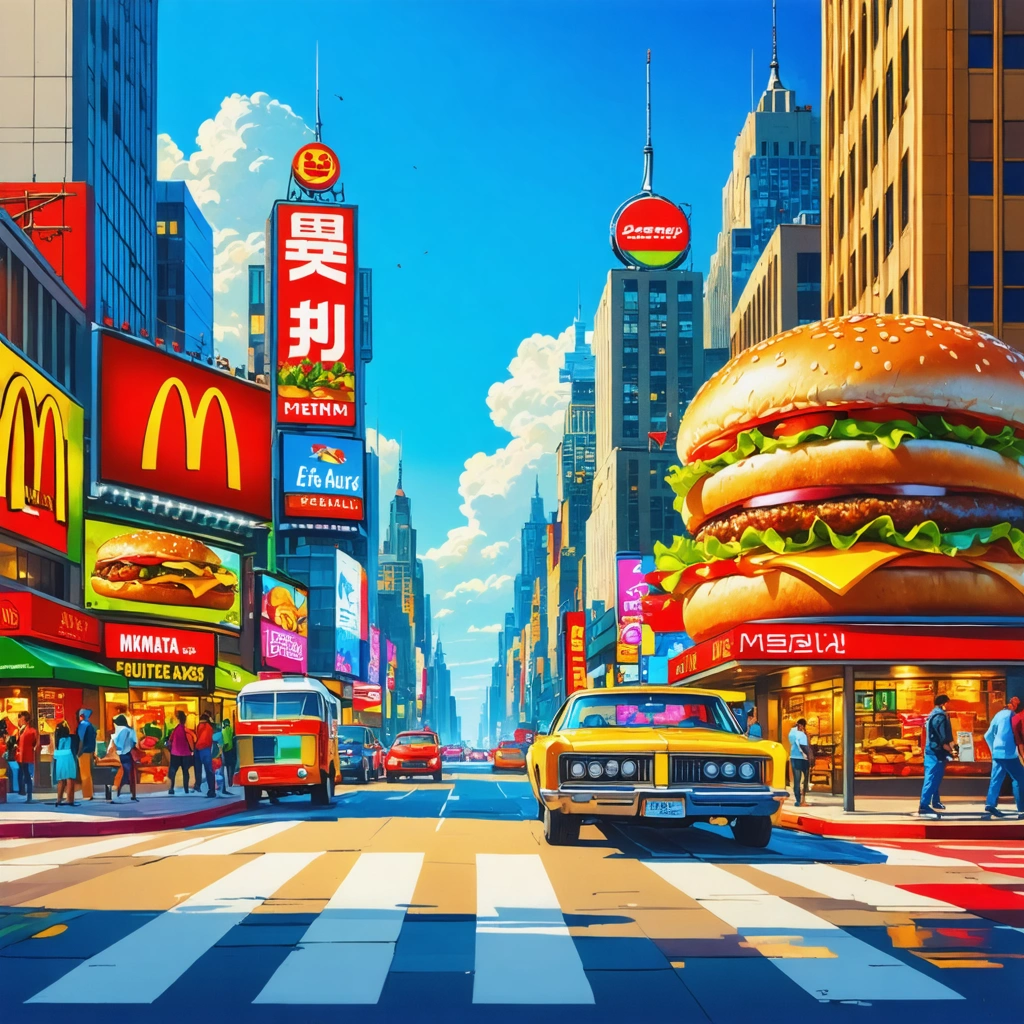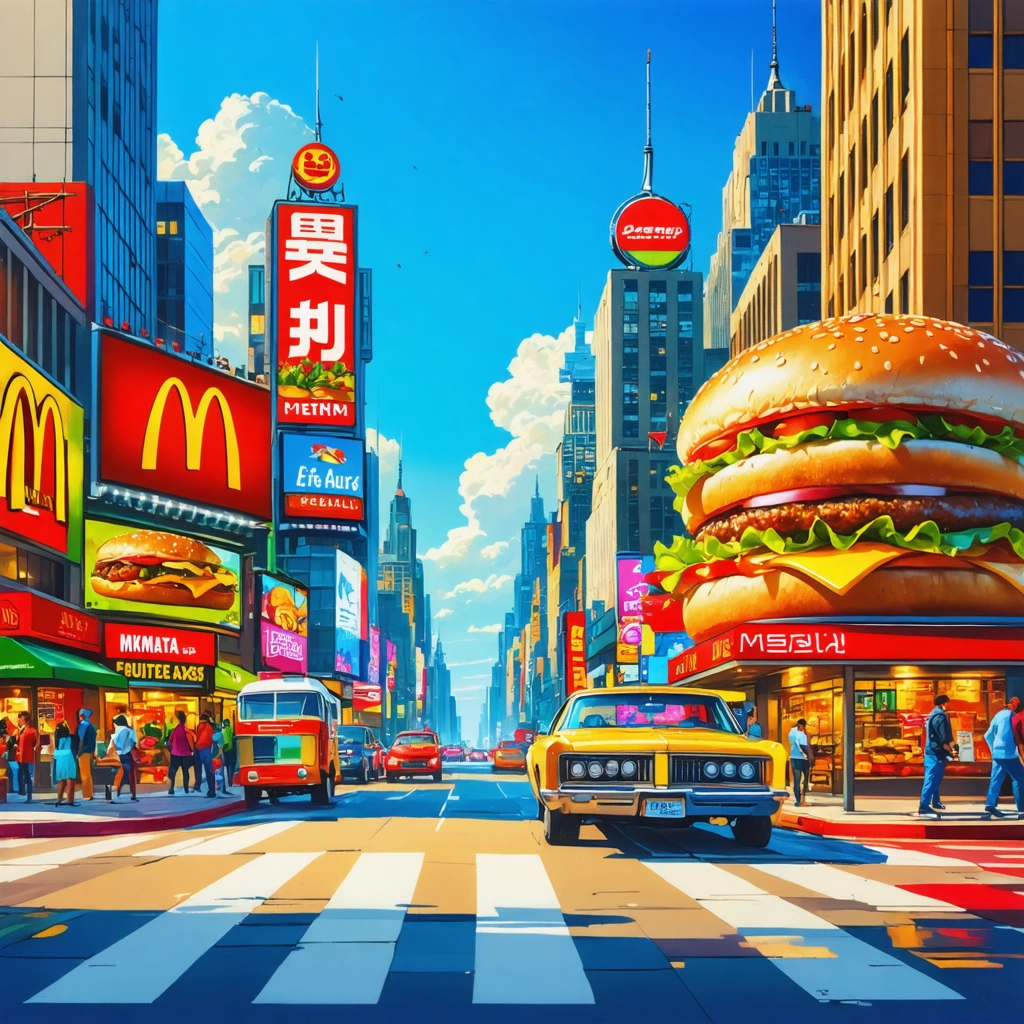The Power of Social Media in Fast Food Marketing: Fast food brands leverage social media to create viral moments and engage younger audiences.

From Traditional Ads to Tweets That Trend: The Shift in Fast Food Marketing
Remember the days when a flashy billboard or a TV commercial was the pinnacle of fast food advertising? Fast food chains like Chick-fil-A once relied heavily on physical ads—those iconic Chick-fil-A billboards that dotted highways and city streets, embedding their brand into our collective consciousness. However, as the digital age reshaped how we consume content, fast food marketing had to evolve at lightning speed. Today, the battleground for brand loyalty and consumer attention is squarely on social media platforms, where a single tweet or viral campaign can outperform traditional advertising in reach and impact.
This seismic shift hasn’t just changed the medium; it’s transformed the message. Engaging younger audiences—who are savvier, more cynical, and harder to impress than ever—requires more than catchy slogans. It demands authenticity, creativity, and the ability to spark conversations online. Enter the era of campaigns like the “chick fil code moo game,” where Chick-fil-A cleverly integrates playful, interactive content that invites customers into a digital experience rather than just pushing a product. Meanwhile, Chipotle’s Twitter account has become a masterclass in witty, timely engagement, turning tweets into cultural moments that fans eagerly share.
Why Social Media Is the Ultimate Playground for Fast Food Brands
It’s no secret that younger consumers—Millennials and Gen Z—live on their phones. They scroll, swipe, and share at a pace that leaves traditional ads in the dust. So, how do brands like Burger King and Chick-fil-A cut through the noise?
- Creating Viral Moments: Burger King’s Twitter is famous for its cheeky, sometimes borderline savage humor that not only grabs attention but sparks conversations. Whether it’s playful jabs at competitors or clever memes, these tweets often go viral, giving the brand massive, free exposure.
- Interactive Campaigns: Chick-fil-A’s “code moo” promotions and games engage customers directly. Instead of passively absorbing an ad, fans participate, unlocking rewards or discovering hidden content, which deepens their emotional connection to the brand.
- Real-Time Engagement: Chipotle’s Twitter presence thrives on responding to trends, pop culture, and customer feedback in real time. This agility makes the brand feel human and approachable, fostering loyalty and repeat business.
These strategies go beyond mere advertising—they create communities and experiences. It’s marketing that feels less like a sales pitch and more like a conversation with friends.
What You’ll Discover in This Article
In the sections ahead, we’ll unpack how fast food brands harness social media’s unique power to build brand affinity, drive sales, and stay relevant in a crowded marketplace. We’ll explore specific examples from Chick-fil-A’s innovative advertising efforts, including their blend of billboard presence and digital interactivity, as well as Burger King and Chipotle’s social media mastery.
Whether you’re a marketer seeking inspiration, a fast food enthusiast curious about the behind-the-scenes tactics, or simply someone interested in how social media shapes modern consumer culture, this article will provide valuable insights. Get ready to dive into the fascinating intersection where fast food meets digital storytelling, and discover why social media isn’t just an add-on for these brands—it’s the very heart of their marketing success.

The Power of Social Media in Fast Food Marketing
Fast food brands have increasingly turned to social media as a cornerstone of their marketing strategies, recognizing its unparalleled ability to create viral moments and engage younger audiences. Platforms like Twitter, Instagram, TikTok, and Facebook offer fast food chains a direct line to consumers, allowing for real-time interaction, creative campaigns, and rapid brand awareness growth.
Why Social Media is a Game-Changer for Fast Food Marketing
Social media's interactive nature enables fast food brands to break through traditional advertising noise. Younger demographics, particularly Gen Z and millennials, spend significant time on social media, making it a prime channel for engagement.
- Viral Potential: Creative content, memes, or challenges can spread rapidly, amplifying brand visibility without huge ad spend.
- Real-Time Engagement: Brands can respond instantly to customer feedback or trending topics, humanizing their image.
- Targeted Advertising: Platforms offer precise demographic and interest-based targeting, maximizing ad effectiveness.
How Major Fast Food Brands Leverage Social Media
Chick-fil-A: Innovative Campaigns and Engagement
Chick-fil-A has mastered the art of blending traditional advertising with social media savvy. Their Chick fil a advertising campaigns often combine wholesome brand values with humor and relatability, which resonates well online.
One notable example is the chick fil code moo game, an interactive social media campaign that engaged users by combining a playful game format with brand promotion. This gamified approach not only increased user participation but also deepened brand loyalty.
Moreover, Chick-fil-A's use of physical chick fil a billboards that tie into social media challenges or hashtags creates a seamless online-to-offline marketing experience, encouraging customers to share content and participate in brand-driven conversations.
Burger King and Chipotle: Mastering Twitter Engagement
Twitter has become a battleground for fast food brands to showcase their wit, engage in playful brand banter, and generate buzz. Burger King Twitter and Chipotle Twitter accounts are excellent examples of how fast food brands use humor, trending topics, and timely responses to connect with audiences.
- Burger King: Known for its cheeky and sometimes provocative tweets, Burger King leverages Twitter to create viral moments that often involve playful jabs at competitors or current events.
- Chipotle: Chipotle’s Twitter strategy combines brand storytelling with user engagement, often highlighting sustainability efforts and menu innovations, which appeals strongly to younger, socially-conscious consumers.
Why Younger Audiences Respond to Social Media Marketing in Fast Food
Millennials and Gen Z consumers prioritize authenticity, entertainment, and community when engaging with brands online. Fast food brands that understand this and use social media to create relatable content see higher engagement rates.
- Interactive Campaigns: Games like the code moo or branded challenges invite participation rather than passive viewing.
- Memes and Humor: Lighthearted, shareable content aligns well with social media culture.
- Social Causes and Transparency: Brands like Chipotle highlight values that resonate with younger audiences.
Data and Industry Insights
According to a 2023 report by Social Media Examiner, over 70% of fast food brands reported increased sales directly linked to social media campaigns. Additionally, engagement rates for fast food content on platforms like TikTok and Instagram are 50% higher than average brand posts, demonstrating the appetite for fast food-related content among social media users.
Chick-fil-A's marketing efforts, including digital campaigns like the chick fil code moo game, have contributed to a 12% year-over-year increase in social media-driven foot traffic, highlighting the tangible business impact of savvy social media marketing.
Key Takeaways for Fast Food Brands Looking to Harness Social Media
- Blend traditional advertising with digital campaigns for a cohesive brand message.
- Use interactive elements like games or challenges to boost user engagement.
- Leverage humor and timely brand voice on platforms like Twitter to connect with younger audiences.
- Integrate offline marketing (e.g., chick fil a billboard) with online campaigns for maximum reach.
- Highlight brand values and social responsibility to appeal to socially aware consumers.
Conclusion
The power of social media in fast food marketing lies in its ability to create viral, engaging moments that speak directly to younger consumers. By studying successful examples like Chick-fil-A's creative games and billboard integration, Burger King’s witty Twitter presence, and Chipotle’s storytelling approach, brands can craft impactful campaigns that not only boost visibility but also foster lasting customer relationships.




